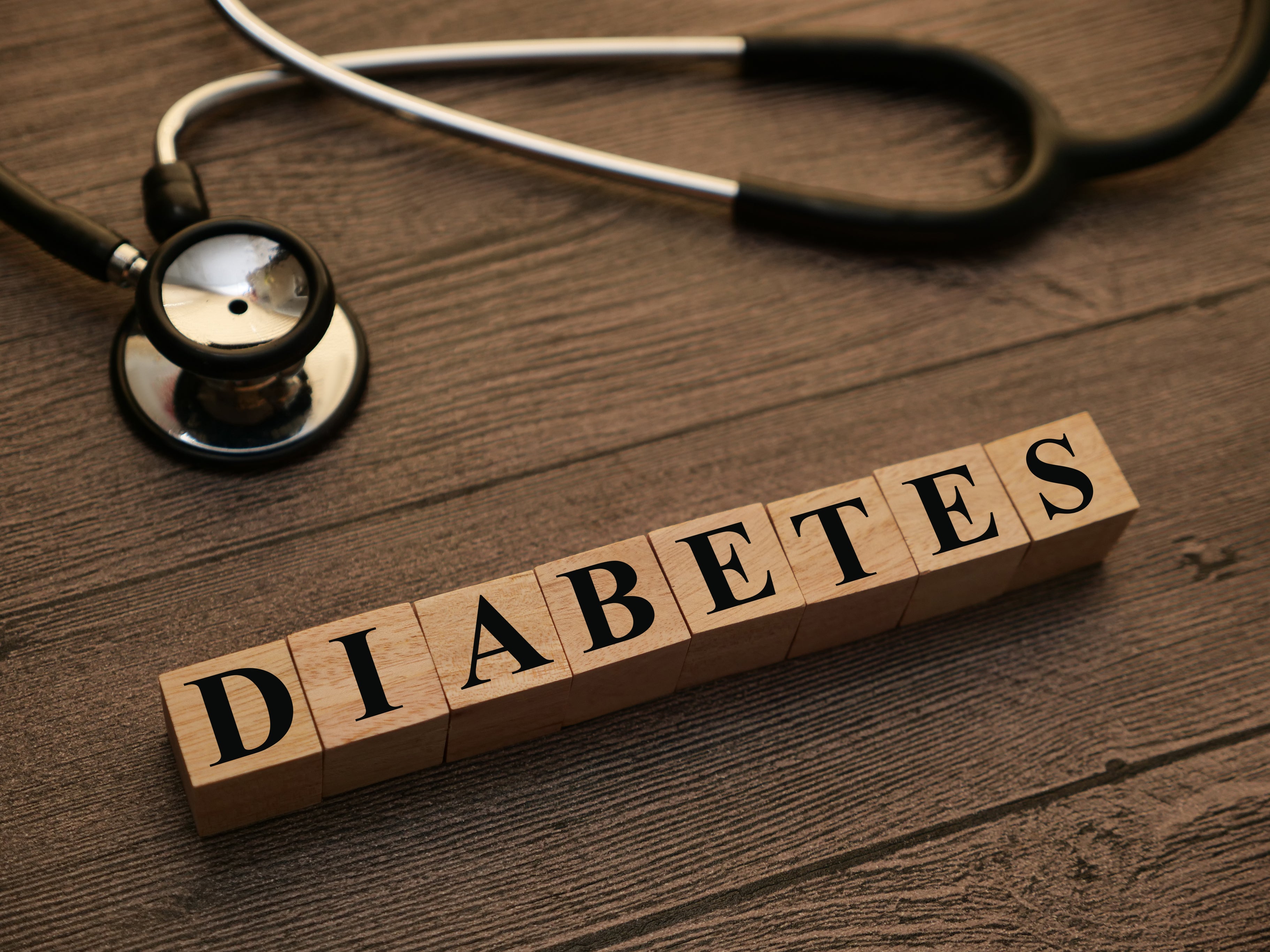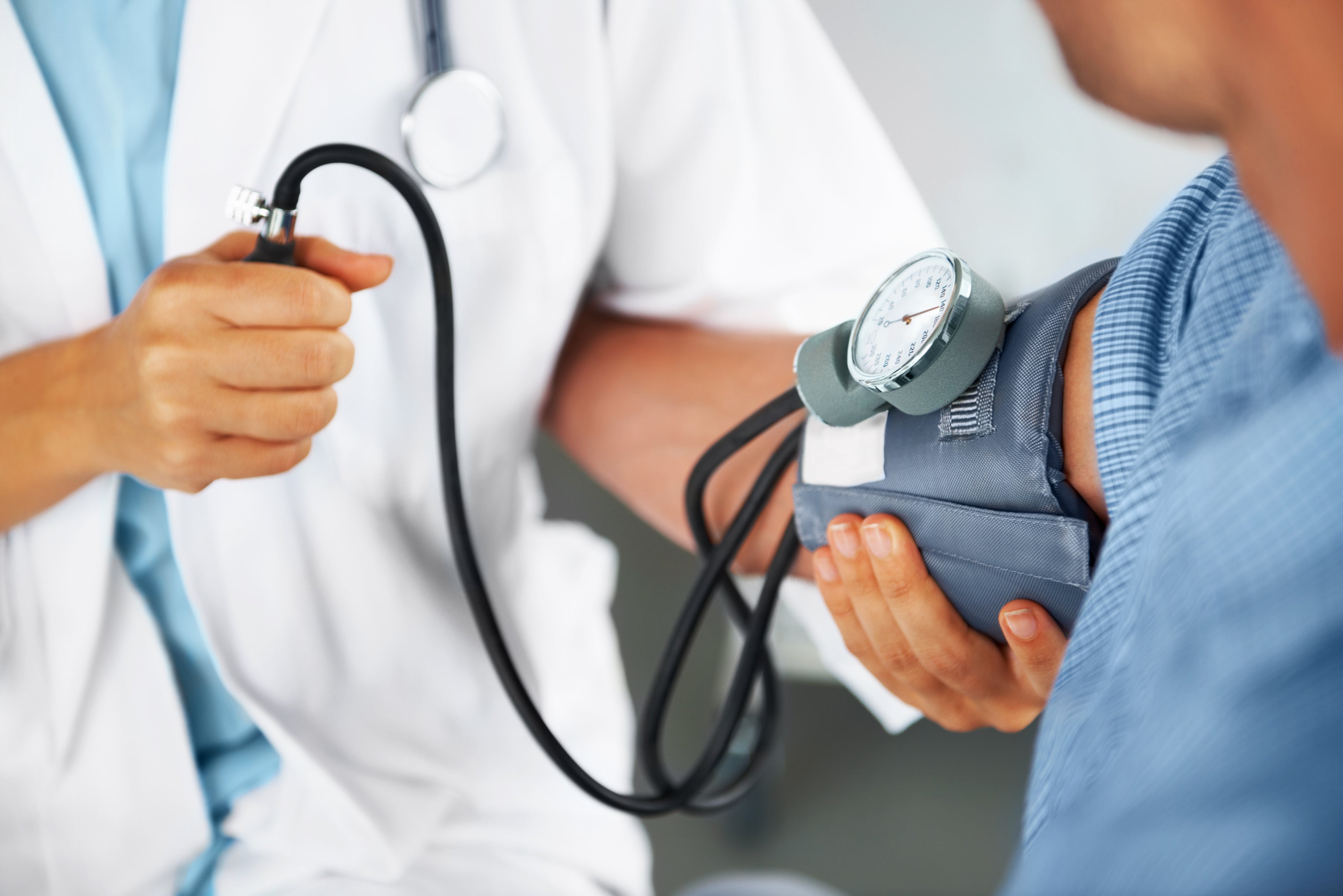How to tell if you have prediabetes – and what you can do about it
Cases of type 2 diabetes have doubled in the past 15 years – but more than half can be prevented or delayed. Maria Lally talks to the experts to find out how to tell if you are at risk... and the actions you can take now


Sometimes when he’s in a coffee shop, waiting in line for his black coffee, Professor Roy Taylor takes a look around. “What I notice is the amount of single-serving cakes or muffins that contain 300 or 400 calories,” says Taylor, emeritus professor of medicine and metabolism at Newcastle University, and author of Your Simple Guide to Reversing Type 2 Diabetes. “While some of the drinks contain close to the same amount. It is something we need to grasp.”
It certainly is. The charity Diabetes UK estimates that more than 5 million people in the UK are living with diabetes, which is an all-time high. Cases of type 2 diabetes have more than doubled in the past 15 years.
Eight per cent of those living with diabetes have type 1, whose cause is unknown. Type 2 diabetes, however, is largely caused by diet and lifestyle, and accounts for around 90 per cent of cases.
And then there is prediabetes, often a precursor to type 2. Diabetes UK estimates there are currently 13.5 million people in the UK who are prediabetic, and therefore 10 to 15 times more likely to develop type 2 diabetes. If this happens, one in 10 adults will have type 2 diabetes within a decade. Left untreated, type 2 diabetes can lead to eye and foot problems, heart attacks and stroke, and kidney and nerve damage. Little wonder the NHS currently spends £10bn a year – 10 per cent of its entire budget – on diabetes.
But what is prediabetes, and how do you know if you have it?
“If you have prediabetes, it means your blood sugars are higher than usual, but not high enough to be diagnosed with type 2 diabetes,” says Douglas Twenefour, head of care at Diabetes UK. “However, it does mean you’re at a high risk of developing it. You may also hear it called borderline diabetes, or non-diabetic hyperglycaemia.”
Professor Taylor has done more work in the field of diabetes than most, and in 2011 he published a groundbreaking study that revolutionised treatment for type 2 diabetes, turning it from an incurable disease into one that could be reversed or put into remission through weight loss. During one of his studies, published in The Lancet Diabetes & Endocrinology, 46 per cent of people with type 2 were in remission after one year.
Last month, the former Culture Secretary Nadine Dorries revealed she was told by her GP she was prediabetic in 2022. She was 65 and said it was most likely a result of living on a diet of shop or canteen-bought meals, thanks to her busy job. To stop her becoming a type 2 diabetic, her GP told her to lose at least one stone and start exercising, which she did.

The Hollywood actor Tom Hanks, however, failed to heed his doctor’s warning that he had prediabetes and went on to develop type 2. After his diagnosis, he told an interviewer, “I’m part of the lazy American generation that has blindly kept dancing through the party and now finds ourselves with a malady.”
However, he has since put his diabetes into remission with an hour of exercise per day (which includes walking his dog) and diet (“I watch what I eat to the point of boredom,” he says). Diabetes UK says that with the right support and lifestyle changes, up to 50 per cent of type 2 diabetes cases can be prevented or delayed.
Prediabetes doesn’t have any symptoms, and it’s diagnosed via a blood test to check your HbA1c levels, which is your average blood glucose level. If your HbA1c is between 6 and 6.4 per cent, this means it’s higher than normal and you’re at risk of developing type 2. Early symptoms of this include weeing a lot, especially at night, thirst, tiredness, genital itching or thrush, wounds that take longer to heal, and blurred eyesight.
Professor Taylor says GPs will test you if you’re at particular risk: “Such as women who had diabetes in pregnancy, known as gestational diabetes, those with a strong family history, or who are heavy. People who have a South Asian or far-Eastern ethnicity are also at higher risk.
“We don’t know why exactly but it’s thought to be a historical cycle of famine, which meant those who were most successful at storing food would survive and have children. It’s known as the thrifty genotype hypothesis and in theory it was a good thing.”

Mala Wallace, 48, was diagnosed with prediabetes in April 2021: “Our family is from South Asia, so I knew about the risk of type 2 diabetes,” she says. “I had a blood test at the GP and then got sent a text saying, ‘You’re prediabetic, you’ve been referred to the diabetes prevention programme’. The first thing I felt was embarrassment, although I tried to see it as a positive make-a-change call.”
Wallace was put on the 10-month Healthier You NHS Diabetes Prevention Programme, and was given dietary advice, started going to the gym and eating smaller portions. After she completed the course, her GP told her she was out of the prediabetic range. “I still need to be really careful though,” she says.
Of the thrifty genotype hypothesis, Professor Taylor says while it’s a robust survival mechanism, “when food is plentiful it’s disastrous”.
And in today’s world, food is just that: “We all now slightly overeat, some more than others,” he says. “The best indication of this is weight gain in adult life. By 21, we’ve finished growing and don’t gain any muscle, bone or brain. Any weight gain is fat gain. When we are middle-aged, we find ourselves roughly the same shape as our middle-aged friends and assume we’re normal. But your yardstick for healthy weight should be that photo of yourself in your early twenties.”
And then there are changing social habits: “We get on trains with 200-calorie coffees. We snack all the time. The food industry has filled every hunger gap there is – processed foods are also full of sugar. Food is everywhere.”
Twenefour says that Ozempic, which has been in the news lately, is a type 2 diabetes medication prescribed to manage blood sugar levels. It’s a once-weekly injection and helps those with type 2 lose weight by reducing appetite and slowing down the movement of food in the gut so they feel fuller for longer.
Professor Taylor says rates of prediabetes will continue to soar unless action is taken, in particular among the younger generation: “It’s a real, unfolding disaster that children are heavier than they should be, heavier than ever, and arriving at adult life already too heavy for their own bodies. And getting diabetes at 25 is much more dangerous than getting it at 50.”
Professor Taylor recently published a study that found we all have our own fat threshold, “and when we pass it and become heavier than our own body can manage, we’re more likely to develop diabetes, even if our BMI [body mass index] is normal”.
So, what can we do to reduce our risk of prediabetes – or stop it becoming type 2?
“Moving more is key,” says Douglas Twenefour. “This doesn’t mean you need to take up a new sport or join the gym. You could make small changes so that you are being more active every day. Smoking is also linked to a higher risk of developing type 2 diabetes.”
But finally, and most importantly, Professor Taylor says the real key is to maintain a healthy weight in adult life, and to lose weight if you need to. “Dig out that twentysomething photo of yourself again and aim for a similar weight – or at least something close to it.”
Diabetes UK has a free online “know your risk” tool at www.riskscore.diabetes.org.uk






Join our commenting forum
Join thought-provoking conversations, follow other Independent readers and see their replies
Comments